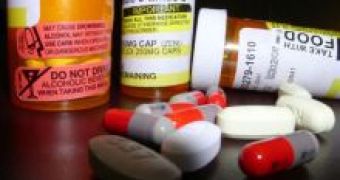Last time scientists found a new class of antibiotics was about half a century ago. And meanwhile an increasing number of bacteria have adapted to the drugs. When penicillin was first discovered it seemed like a miracle drug able to cure any disease, but it isn't so today.
Diseases that seemed to have been eradicated, such as tuberculosis, reappear today in antibiotic-resistant forms. The recent emergence of "superbugs'' that are resistant to even the most potent antibiotics, has led some to make pretty dire predictions about the possibility that in the near future some infections will simply be incurable. Again.
So, it's about time scientists would come up with at least one new class of antibiotics in this on-going race between our immune system and the microbes. The problem is that, in spite of all the recent advances in genetics and molecular biology, the hunt for new antibiotics is still conducted by trial and error. But now researchers might have just discovered the long-sought new type of antibiotics.
Researchers invented a clever genetic trick to make the existing drug-hunting process more effective. Their innovation was to test extracts of fungi, plants and other natural substances against bacteria with a genetically engineered Achilles' heel. Because the bacteria were weakened, any compound that harmed them would have a more dramatic effect and thus be easier to identify.
Scientists chose the genetic handicap carefully, placing it in a metabolic pathway that is not attacked by any major existing antibiotics. "We screened over 250,000 extracts that came from things isolated all the way around the world,'' said Stephen M. Soisson.
Eventually they discovered various compounds that looked promising and one of them proved effective in curing mice infected with antibiotic-resistant bacteria. It remains to be seen if the compound will also work in people, but other experts have said that they are very impressed with the results and that the molecule has a lot of potential. Clinical tests are about to start soon.
The researchers found the compound in a scoop of soil from South Africa. They named it platensimycin, because it is produced by the soil bacterium Streptomyces platensis as a weapon in its own battles against other microbes. Scientists note that even if platensimycin turns out to be a clinically useful antibiotic, bacteria will inevitably become resistant to it just as they have existing drugs. We can only wonder whether this arms race will ever be definitely won.

 14 DAY TRIAL //
14 DAY TRIAL //